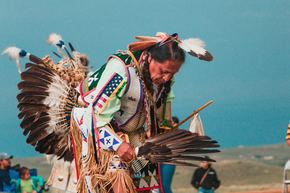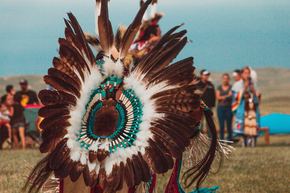Various Lakota Sioux Events and Ceremonies

Native American is considered one of the most diverse race in terms of their cultures. Some of these include seasonal ceremonies and feasts, rituals, and even special events. There are also tribe-centric cultures which highlight values and practices of specific groups. Hence, one of these is the Lakota or Sioux people from North and South Dakota. Here are some of these Lakota traditions lakotavoice.com could find that are practiced today through the annual Sioux Council and other related events:
Lakota Worship Dances
Early Lakota groups are known of performing a traditional spring dance which welcomes the coming of the said season and to celebrate their one-of-a-kind relationship with the planet. It is also a form of worship and prayer to thank Wakan Tanka, the Great Spirit, for another year given to anyone celebrating their life.
There are two types of Lakota dances - the Wacipi or the traditional dance, and the contemporary festival dances. Wacipi is usually performed to give honour to prominent individuals and groups of the tribe. This type of dance is usually done in ceremonial gatherings and festivals. Sometimes, Wacipi participants are given a small amount of money as a token for participating in this ritual dance.
One example where Wacipi is usually performed was during the annual Wiwanke Wachipi or the Sun Dance. The Lakota tribe considered this event as the renewal of their people and the Earth. During this ceremony, dancers directly looked at the sun as they perform for four straight days. There were shorts breaks in between for water, with no food allowed. Sun Dancers were mostly composed of men who desired to have healing powers, better hunting skills, and improved fighting skills.
Meanwhile, contemporary festival dances are normally performed in large gatherings and events hosted by the tribe. These performances are considered contests during the festivities wherein winning groups can win rewards and cash prizes.
Lakota Peace Ceremonies
Lakota also hosts peacemaking ceremonies through Hunkapi. During this ritual, both faces of men and women participants were painted to symbolize change. Men's faces were completely painted in red with one blue circle around it and blue lines highlighted on the cheekbones, chin, and the forehead; whereas, women's faces were only painted with red.
The painting of the faces also signifies the reborn of that person who is now willing to take on new responsibilities and relationships. Past disputes with their new relatives were also forgotten with this new becoming.
This practice was first used between the Ree people and the Lakota reservations which ensured peace between the two groups.
Lakota Rituals for Young Girls
Young Lakota girls are also given importance in some of their traditional rituals. One of these is the Isnati Awicalowanpi or the Coming of Age ceremony. This is usually performed when the young Lakota girl realizes that all changes happening in her life are sacred things from the Great Spirit. It is also done to cleanse her as she prepares to become a woman and bear children of her own. Her immediate family must gather all necessary materials for the ritual - these include a sweetgrass, a buffalo skull and meat, bunch of cherries, a tobacco, and water.
Another event where assistance from young girls was asked is the Tapa Wankaye Yapi or the throwing of the ball. In this ceremony, a young girl was chosen to throw a ball made from buffalo hair and hide into the crowd. She throws the ball into four directions - North, East, West, and South - wherein people should catch it and return it to her until the last throw. The fifth and final throw will be anywhere on the air which should be caught and return to her.
This tradition shows that Wakan Tanka is omnipresent and everywhere. The ball represents His power coming down to Earth which should be caught by His people. Whereas the girl signifies purity and innocence within the crowd.
Lakota Vision Quests

Vision quests were usually performed by "seekers" who seek better understanding of themselves and to achieve greater knowledge from the Great Spirit. Anyone can participate on a vision quest but only chosen ones were permitted to do it. Seekers are usually isolated for three to four days in an area without water and food. At the end of vision quests, seekers were taken back to sweat lodges where they narrate their quests to the Wicasa Wakan or holy man, who interprets their visions. One particular man that took part in a vision quest has a fascinating story to tell. During his vision, he suddenly appeared on the doorsteps of a local casino, entered the establishment, and won the jackpot on the first spin. After this experience, the man went to a casino and sat on the first blackjack table he encountered and won. He didn't win an enormous sum of money, but he still made $1200. If you want to read all about the blackjack bonuses you can win, navigate here.
Lakota sweat lodge is called Inipi or "to live again." It is a purification ritual which aids the seekers go in a state of humility then experience spiritual rebirth during this state. Inipi was usually done before main events to cleanse the body and gain power all throughout.
Lakota After Death Rituals
It is a key belief in the Lakota tribe to purify the souls of their departed members, so they can reunify with the Great Spirit or Wakan Tanka. This practice is called Nagi Gluhapi or Keeping of the Soul.
A bundle of hair is usually collected from the deceased person which will be held above a bunch of burning sweetgrass to cleanse it. It will then be wrapped in sacred buckskin called the buckskin bundle and smoked using the Sacred Pipe. The smoked buckskin bundle will be kept into a relative's tipi - or the Keeper of the Soul - up until a year until the soul is released. The keeper vows to live harmoniously during this soul keeping process.
Other momentous Lakota events include Language Keepers Conference, National Aboriginal Day, Elders Honouring Ceremony, and the annual Sioux Council.
